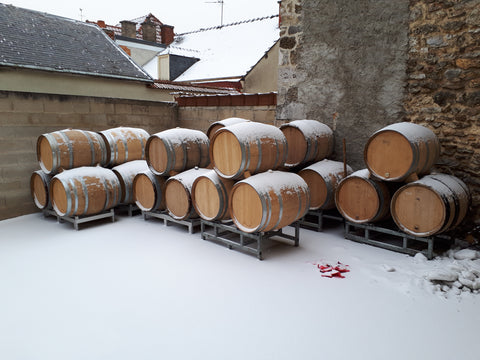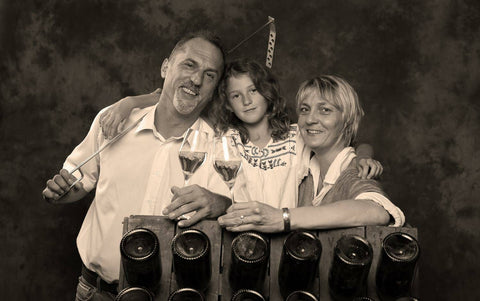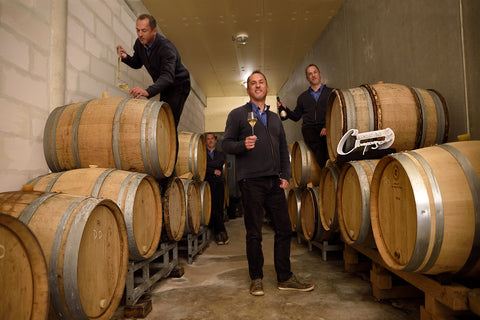Alain Bernard
Welcome to Champagne Alain Bernard – a family history dating back to the 17th century in Hautvillers. Founded in 1912 by his grandfather, Arthur Bernard, in Dizy, he began producing his own champagne from vines around Hautvillers. This tradition has been passed down from generation to generation.
Their vineyards are located in prime locations such as Aÿ (Grand Cru), Dizy, Hautvillers, and Cumières (Premiers Crus). They cultivate the vines with the utmost care, cultivate the soil naturally, and harvest the grapes exclusively by hand.
The champagne is obtained from the first pressing and fermented in stainless steel tanks or oak barrels. After a second fermentation in bottles, the champagnes are aged for at least three years in hand-dug cellars. After aging, they are manually stirred and disgorged before reaching perfect finesse. Discover the artistry and passion that goes into each bottle.

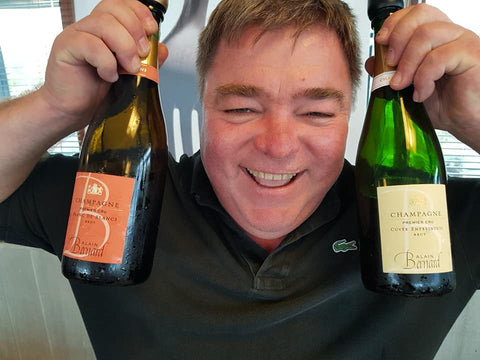
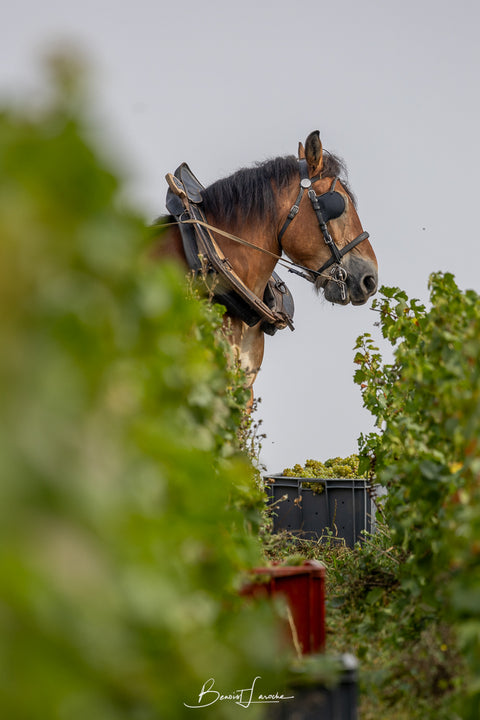
Delphine Cazals
Vineyard area: 10 ha / Production: 90,000 bottles / Côte des Blancs
Grandson Claude Cazals is the inventor of the Gyropalette – the machine that automatically shakes champagne bottles, significantly reducing the manual labor involved in champagne production. Delphine Cazals is now the fourth generation of the family to manage the winery.
A Tribute to Chardonnay
The vineyards are located exclusively in Grand Cru vineyards in Mesnil-sur-Oger, Oger, Vertus, and Villeneuve-Rennville. The winery also owns the Clos Cazals in Oger, one of only nine clos (vineyards enclosed by a wall) in Champagne. Cazals' Champagnes are elegantly fruity, finely bubbly, and typical of the Côte des Blancs Champagnes. They are ideal as aperitif champagnes and pair well with seafood, fish, and sushi. Numerous awards have been won!
The cuvées of the house Cazals
The Claude Cazals house offers cuvées of wonderfully freshness that are, to say the least, irresistible. The Cuvée Carte d'Or beautifully reflects the house's style: balanced, mineral, and floral, brioche-like aromas. Ideal as an aperitif to whet the appetite. The Cuvée Vive is extra brut and therefore very fresh and sparkling. Its eight years of ageing in the cellar lend it enormous depth and complexity. How could one not fall for La Chapelle du Clos 2016? Intense, precise, and delicious. A cuvée with great effervescence to enhance a festive menu. We also present the Clos Cazals 2013, which comes from the famous parcel of the same name and offers a nectar that lives up to its reputation. Aged in oak barrels and aged for at least 10 years in the cellar, it is a champagne of intense aromatic complexity, fine and elegant, suitable for refined fish or truffle dishes.
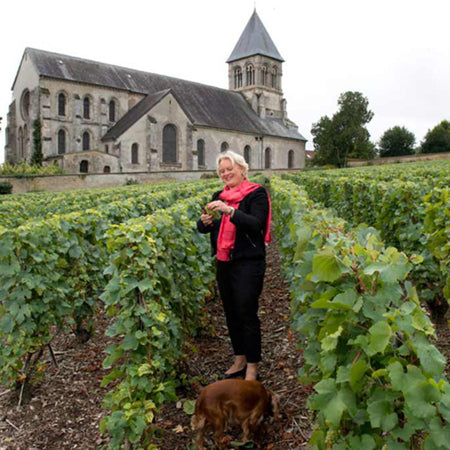
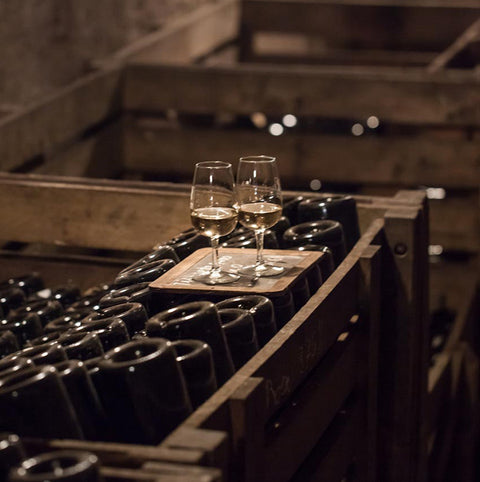
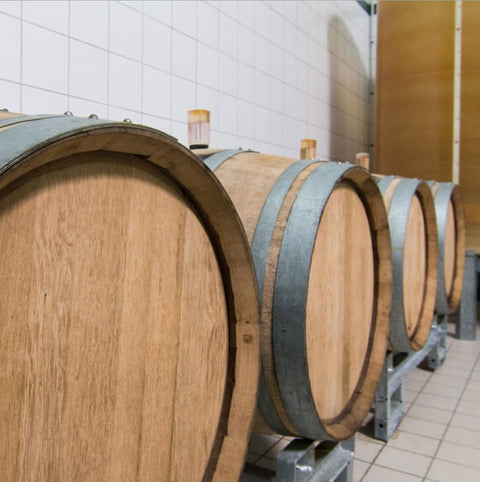
Francis Orban
Vineyard area: 7.5 ha / Production: 20,000 bottles / Leuvrigny
The 29 plots are located in the municipalities of Leuvrigny and Sainte-Gemme and cover an area of 7.5 hectares. Due to its south/southeast exposure, the vineyard enjoys particularly favorable sunlight, ideal conditions for the predominant Meunier grape, which grows on more than 90% of the area.
Francis loves the Meunier grape variety, which finds ideal expression in his vineyards, drawing its freshness from the limestone and its finesse from the clayey subsoils. Chardonnay, which covers 9% of the vineyard area, is grown on limestone soils and brings a special freshness that elegantly complements the cuvées.
Early on, Francis committed to sustainable viticulture by limiting the use of pesticides as much as possible, completely avoiding insecticides, and implementing environmentally friendly practices in the vineyards. Francis uses natural cover cropping methods and even inter-breeding to encourage the vines to thrive naturally. From pruning to harvest, the vines are carefully and decisively tended.
At the end of 2018, he received the highest level HVE certificate (HVE3). This recognized Francis's daily commitment to environmental protection and the constant development of his approach, and rewarded him for his determination and the most authentic way of expressing his terroir.
The harvest strategy for each harvest involves selecting grapes at perfect ripeness, when the balance between sweetness and acidity is achieved. Through rigorous grape selection during harvest and pressing with an automatic Coquard press without a membrane (which is more gentle on the fruit), only the finest fruit is selected. During winemaking, interventions are kept to an absolute minimum (very low dosage), allowing the terroir to express itself in its purest and most natural form!
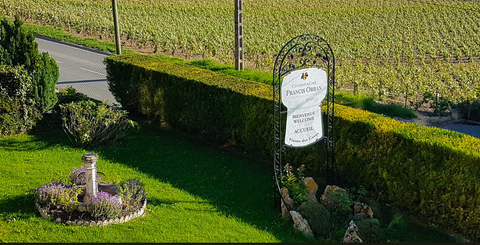
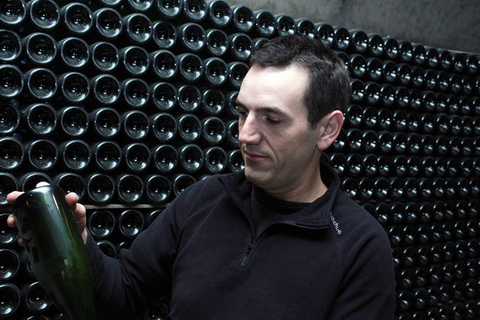
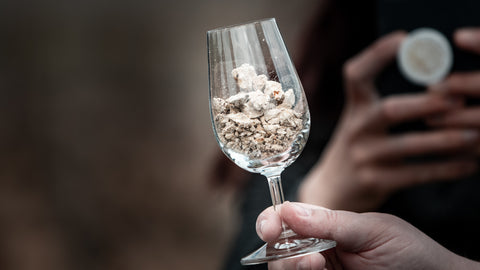
La Maison Penet / Alexandre Penet
Vineyard area: 6 ha / Production: 20,000 bottles / Verzy
Although viticulture has been an integral part of the family's know-how since the 17th century, Désiré and Gilbert Penet decided to produce their first champagne in the early 1930s.
In 1967, Christian Penet married Marie-Louise Chardonnet, whose family had also been cultivating vineyards in the neighboring village of Verzenay for 400 years. With the marriage, the family business expanded to 6 hectares of Grand Cru vines: This marked the birth of the Penet-Chardonnet champagne brand.
Today, Alexandre, an oenologist with a diverse background, continues the family adventure with the support of his wife Martine and never ceases to express the qualities of his terroir with precision, elegance and refinement.
The historic logo is inspired by the beautiful landscape of one of their finest parcels in Verzy, which includes a local landmark (the "Penet Cross") dating back to the 19th century. Along with the manor house from the same period, it symbolizes the family's historic heritage, instantly recognizable in their high-quality, estate-grown range of Penet-Chardonnet Grand Cru.
In the spirit of modernity and transparency, and so that every layperson understands what they are consuming, La Maison Penet was a pioneer in Champagne with the introduction of a precise back label:
You will find a wealth of information there: the blend, the length of aging, the type of winemaking, the date of bottling, the date of disgorging, the dosage and, in some cases, even the harvest date for a specific plot!
For connoisseurs, the exceptional single-vineyard wines are produced in limited quantities and are therefore numbered.
By simply scanning the label with your smartphone, you can bring the bottles to life - a first in the world of champagne!
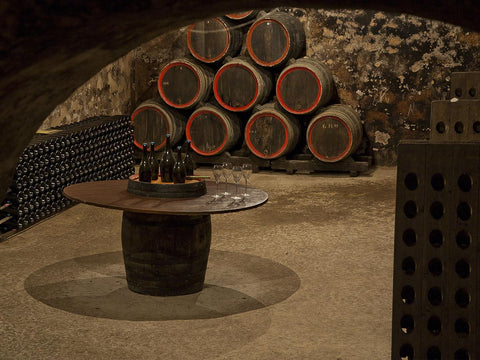
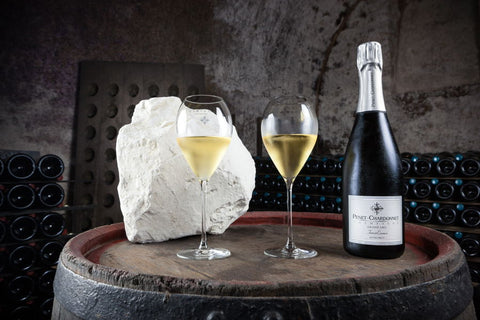
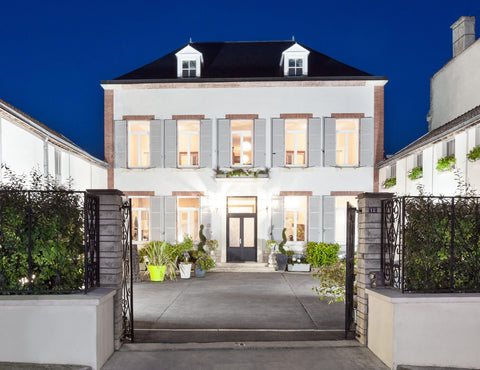
Bernard Pertois
Vineyard area: 18 ha / Production: 36,000 bottles / Côte de Blancs
Since 1650
The Bernard Pertois winemaking family looks back on a long tradition. The Bernard Pertois family has been a winemaking family in the Côte des Blancs since 1650, dating back to the time of Louis XIV, the Sun King. This means that the family is now in its 11th generation. Since 1910, over 100 years ago, the winemaking family has been producing its own wines, initially and later its own champagnes. The expertise has been passed down from generation to generation. Reynald Pertois has now taken over the reins and, together with his wife Séverine, manages the family's fortunes.
Reynald Pertois owns 18 hectares, of which only 4.5 hectares of the best sites with the oldest vines are used for his own 36,000 bottles. These vineyards are located in the heart of the Côte des Blancs in the prestigious Le Mesnil-sur-Oger. All vineyards used by Pertois for his own champagne production are classified as Grand Crus. The remaining grapes are sold, mostly to Billecart Salmon.
The outstanding vineyard sites, combined with the unique soil composition and microclimate of the Côte des Blancs, form the basis for excellent champagnes. At Bernard Pertois, the grower champagnes are dominated by the Chardonnay grape variety, resulting in their inimitable terroir character.
The Champagnes are of a consistently high standard and impress with their unique bouquet and flavor characteristics. The Bernard Pertois winemaking family pursues a line of fresh, elegant Champagnes that consciously reflect the broad spectrum of the terroir, with its chalk, Megrel, and limestone soils and the resulting mineral notes.
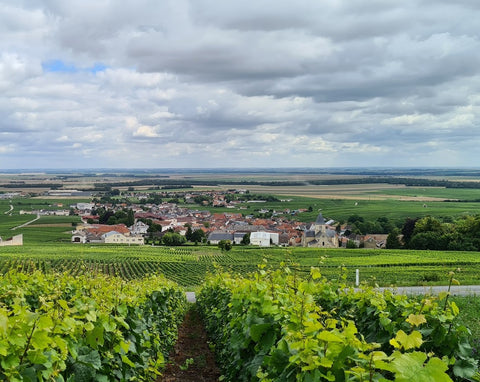
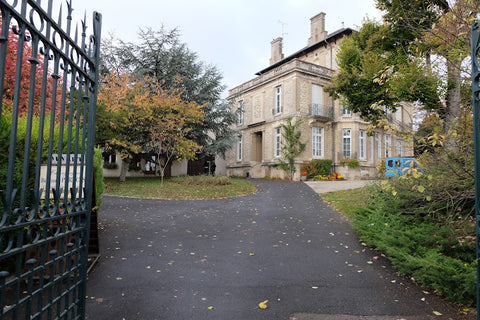
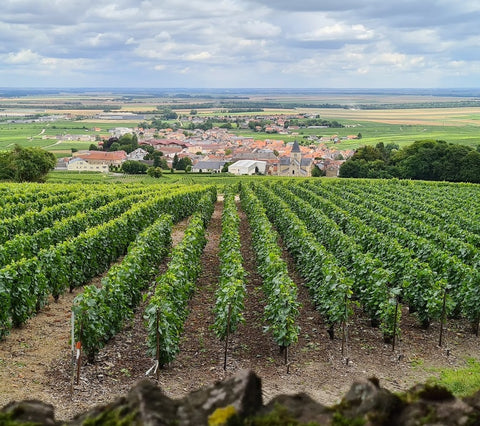
Stéphane Vignon
Vineyard area: 7 ha / Production: 20,000 bottles / Verzenay & Verzy
Grand Cru without compromise
Verzenay, famous for its lighthouse and its outstanding Pinot Noir grapes, is home to the Vignon winemaking family, whose long-standing tradition has seen them use the grapes from their vineyards for their own champagne production since 1946. In 2001, Michel Vignon handed over the reins to his son Stéphane.
The winemaker owns 7 hectares of vineyards, exclusively in Grand Cru sites. However, only the best 2.8 hectares are used to create his own champagne. The rest of the grapes are sold to the major houses. Annual production is limited to around 20,000 bottles. We manage to secure a few bottles here and there. The vineyards are located on various plots in Verzenay and Verzy. Both municipalities are considered prime Grand Cru sites. Each plot has its own character, which Stéphane cultivates and consciously utilizes to produce grower champagnes according to time-honored traditions and in the classic style.
Stéphane Vignon's vines are very old. The oldest vines were planted in 1947. He also has a vineyard planted in 1965 and one from 1961. This provides the perfect basis for grapes with great complexity and finesse. The vineyards are farmed organically, but are not certified organic. The vineyards are cultivated with respect for the terroir, sometimes with the help of horses.
In 2022 alone, Stéphane received 81 medals for his champagnes and was honored several times in the 2022 Gault Millau Guide!
